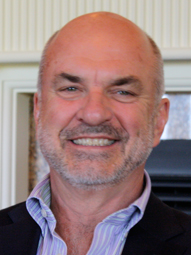“A leader is a person who has an unusual degree of power to project onto other people his or her shadow or his or her light. A leader is a person who must take special responsibility for what is going on inside him or herself, lest the act of leadership create more harm than good.”
– Parker J. Palmer
This way of thinking about leadership places emphasis on reflectiveness, understanding the self and the ‘being’ of the leader, as a complement to skills and techniques for the ‘doing’ of leadership.
A helpful framework for holding the two together is the idea that each one of us is on three journeys through our lives (personal, family and friends, and work) and that people with responsibility for leadership need to be particularly aware of each journey and the work of keeping them in balance.
-Gillian Stamp (The four Journeys of the Leader)
When reading the above piece I thought about the difficulty of most senior managers to think about leadership development as a personal adaptive challenge (the “being” of leadership) as opposed to solving a technical problem (the “doing of leadership). The first two questions that must be asked, but aren’t easy to ask, and therefore aren’t always are….”For things to change, what do I personally have to change?” “Can I, and if so, how do I actually change these things about me?”
Doing of Leadership (skills, knowledge, competencies, techniques, horizontal development…filling up the tool-box at the current level of management)
Being of Leadership (helping a leader increase their capacity to get their head, heart and ego around complexity and make sense of the ambiguities, interconnections and unpredictabilities of their work, through connecting more effectively with themselves and other key stakeholders that they work with, and therefore making more effective decisions in a VUCA world. A kind of vertical development rather than a horizontal development, if you will.
The “doing” of leadership requires learning and piling on technical and interpersonal skills…how to listen more effectively, how to structure meetings, how to coach a subordinate, and give them feedback, etc. It is about increasing my competency tool kit. Necessary but not sufficient.
However the “being” of leadership requires deep self-reflection and an honest evaluation of how others see us, through receiving honest and candid feedback, as a result of testing on personality, values, motives as well as interviewing family, friends and co-workers. . How do I show up in the world, with my key relationships? Do I naturally create connection or do I break it. Am I authentically expressing who I am and what motivates me, or am I expressing what I think others want and expect. Do I see the interconnections in the complexities that we are dealing with? Do I see the requirement for collaboration in order to manage complex and systemic interconnected problems? Is the lens through which I see myself and my environment, that has helped me made meaning of the world, so far….outdated? Do I need to access a more effective lens for making meaning in the increasing complexity of life? How do I do this? Can I learn it?
I am not sure how many senior managers are both willing and capable of addressing and developing both the “being” of leadership as well as the “doing” of leadership” . As trusted advisors for helping managers become better leaders, we also need to get better at balancing the approaches to both the being and the doing of leadership. This requires courage and new skills in design from us. I can draw up a lesson plan for helping with the “doing of leadership”. It is not that straightforward when addressing the “being of leadership”. We can’t as easily predict the outcomes for changing one’s “being”. Adding on skills vs. transforming one’s perspective or mindset requires very different approaches.
Solving wicked organizational problems requires more senior leaders and their trusted advisors and coaches willing and able to dig into the “being” of leadership development, as well as the “doing” of leadership development.

